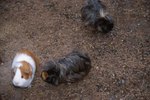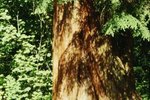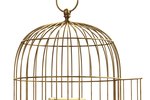
Your guinea pig (Cavia porcellus) is a member of the Rodentia order. Like nearly all rodents, he has teeth that continue to grow throughout his life. To wear them down he gnaws on his toys, his cage and especially wood. Whether building a house of lumber scraps or twigs harvested from the garden, use caution when selecting the wood, as some trees are toxic to the rodent family—including your piggy.
Fruitwoods
Guinea pigs enjoy chewing on the twigs and branches of fruit trees, such as apple, crabapple, pear and hazelnut trees. While lumber from these trees is not readily available, twigs are easily obtained when the fruit trees are pruned. However, avoid using twigs from trees that are sprayed with pesticides. Also avoid using the wood from any members of the Prunus family, such as almond, apricot, cherry, nectarine, peach and plum trees. Trees from the Prunus family are unsafe for any member of Rodentia, including guinea pigs, chinchillas, gerbils and squirrels.
Lumber
Your local home improvement center carries a variety of lumber in standard sizes, making it easy to build a guinea pig house. Among the safe woods are aspen, linden or basswood, poplar and kiln-dried white pine. In general, any soft, resinous or aromatic woods, such as air-dried pine, cedar, eucalyptus and redwood are not safe for your piggy. Although cedar and pine wood shavings are marketed for use in rodent cages, veterinarians and rodent enthusiasts discourage their use due to the phenols in the resin.
Willow
Willow twigs are easily woven into snug guinea pig shelters. While most varieties of willow, such as pussy willow and weeping willow, are safe, avoid using white willow twigs and branches. White willow contains salicylic acid, the main component of aspirin. Willow basket–making supplies are generally safe for use in a guinea pig cage, although if your piggy chews on his house, you should check regularly for sharp, pointed twigs to prevent mouth and eye injuries.
Vines
Grapevines and peeled, de-thorned blackberry, raspberry and rose vines and canes make attractive woven or twig houses and tunnels for guinea pigs. Avoid using any vines, twigs or branches from plants sprayed with pesticides. Depending on the pesticide, it could make your piggy sick or even kill him. Natural materials may be sterilized to keep fungi or insect pests out of your house. Simply wash the woody materials with a saltwater solution, then place them on a cookie sheet. Bake at 300 degrees Fahrenheit for 30 minutes and allow them to cool before assembling your guinea pig house.
References
Resources
Photo Credits
-
Jupiterimages/Photos.com/Getty Images
Writer Bio
With degrees in fine and commercial art and Spanish, Ruth de Jauregui is an old-school graphic artist, book designer and published author. De Jauregui authored 50 Fabulous Tomatoes for Your Garden, available as an ebook. She enthusiastically pursues creative and community interests, including gardening, home improvement and social issues.




